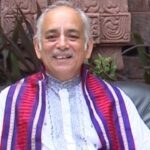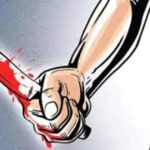Turkey rushes to find survivors of ‘disaster of the century’; Death toll hits 21,000

KAHRAMANMARAS,FEB 10: Rescue workers made a final push Thursday to find survivors of the earthquake in Turkey and Syria that rendered many communities unrecognizable to their inhabitants and led the Turkish president to declare it “the disaster of the century.” The death toll topped 21,000.
The earthquake affected an area that is home to 13.5 million people in Turkey and an unknown number in Syria and stretches farther than the distance from London to Paris or Boston to Philadelphia. Even with an army of people taking part in the rescue effort, crews had to pick and choose where to help.
The scene from the air showed the scope of devastation, with entire neighborhoods of high-rises reduced to twisted metal, pulverized concrete and exposed wires.
In Adiyaman, Associated Press journalists saw someone plead with rescuers to look through the rubble of a building where relatives were trapped. They refused, saying no one was alive there and that they had to prioritize areas with possible survivors.
A man who gave his name only as Ahmet out of fear of government retribution later asked:
“How can I go home and sleep? My brother is there. He may still be alive.” The death toll from Monday’s 7.8 magnitude catastrophe rose to nearly 21,000, eclipsing the more than 18,400 who died in the 2011 earthquake off Fukushima, Japan, that triggered a tsunami and the estimated 18,000 people who died in a temblor near the Turkish capital, Istanbul, in 1999.
The new figure, which is certain to rise, included over 17,600 people in Turkey and more than 3,300 in civil war-torn Syria. Tens of thousands were also injured.
Even though experts say people could survive for a week or more, the chances of finding survivors in the freezing temperatures were dimming. As emergency crews and panicked relatives dug through the rubble — and occasionally found people alive — the focus began to shift to demolishing dangerously unstable structures.
The DHA news agency broadcast the rescue of a 10-year-old in Antakya. The agency said medics had to amputate an arm to free her and that her parents and three siblings had died. A 17-year-old girl emerged alive in Adıyaman, and a 20-year-old was found in Kahramanmaras by rescuers who shouted “God is great.”
In Nurdagi, a city of around 40,000 nestled between snowy mountains some 35 miles (56 kilometers) from the quake’s epicenter, vast swaths of the city were leveled, with scarcely a building unaffected.
Even those that did not collapse were heavily damaged, making them unsafe.
Throngs of onlookers, mostly family members of people trapped inside, watched as heavy machines ripped at one building that had collapsed, its floors pancaked together with little more than a few inches in between.
Mehmet Yilmaz, 67, watched from a distance as bulldozers and other demolition equipment began to bring down what remained of the building where six of his family members had been trapped, including four children.
He estimated that about 80 people were still beneath the rubble and doubted that anyone would be found alive.
“There’s no hope. We can’t give up our hope in God, but they entered the building with listening devices and dogs, and there was nothing,” Yilmaz said.
Mehmet Nasir Dusan, 67, sat watching as the remnants of the nine-story building were brought down in billowing clouds of dust. He said he held no hope of reuniting with his five family members trapped under the debris.
Still, he said, recovering their bodies would bring some small comfort.
“We’re not leaving this site until we can recover their bodies, even if it takes 10 days,” Dusan said. “My family is destroyed now.”
In Kahramanmaras, the city closest to the epicenter, a sports hall the size of a basketball court served as a makeshift morgue to accommodate and identify bodies.
On the floor lay dozens of bodies wrapped in blankets or black shrouds. At least one appeared to be that of a 5- or 6-year-old.
At the entrance, a man wept over a black body bag that lay next to another in the bed of a small truck.
“I’m 70 years old. God should have taken me, not my son,” he cried. Workers continued to conduct rescue operations in Kahramanmaras, but it was clear that many who were trapped in collapsed buildings had already died. One rescue worker was heard saying that his psychological state was declining and that the smell of death was becoming too much to bear.
In northwestern Syria, the first U.N. aid trucks since the quake to enter the rebel-controlled area from Turkey arrived, underscoring the difficulty of getting help to people there. In the Turkish city of Antakya, dozens scrambled for aid in front of a truck distributing children’s coats and other supplies.
One survivor, Ahmet Tokgoz, called for the government to evacuate people from the region. Many of those who have lost their homes found shelter in tents, stadiums and other temporary accommodation, but others have slept outdoors.
“Especially in this cold, it is not possible to live here,” he said. “If people haven’t died from being stuck under the rubble, they’ll die from the cold.”
The winter weather and damage to roads and airports have hampered the response. Some in Turkey have complained that the government was slow to respond — a perception that could hurt Turkish President Recep Tayyip Erdogan at a time when he faces a tough battle for reelection in May.
“As you know, the earthquake hit an area of 500-kilometer (311-mile) diameter where 13.5 million of our people live, and that made our job difficult,” Erdogan said Thursday.
In the Turkish town of Elbistan, rescuers stood atop the rubble from a collapsed home and pulled out an elderly woman.
Rescue teams urged quiet in the hopes of hearing stifled pleas for help, and the Syrian paramedic group known as the White Helmets noted that “every second could mean saving a life.”
But more and more often, the teams pulled out dead bodies. In Antakya, more than 100 bodies were awaiting identification in a makeshift morgue outside a hospital.
With the chances of finding people alive dwindling, crews in some places began demolishing buildings. Authorities called off search-and-rescue operations in the cities of Kilis and Sanliurfa, where destruction was not as severe as in other areas. Vice President Fuat Oktay said rescue work was mostly complete in Diyarbakir, Adana and Osmaniye.
Across the border in Syria, assistance trickled in. The U.N. is authorized to deliver aid through only one border crossing, and road damage has prevented that thus far. U.N. officials pleaded for humanitarian concerns to take precedence over wartime politics.
It wasn’t clear how many people were still unaccounted for in both countries.
Turkey’s disaster-management agency said more than 110,000 rescue personnel were now taking part in the effort and more than 5,500 vehicles, including tractors, cranes, bulldozers and excavators had been shipped. The Foreign Ministry said 95 countries have offered help
World Bank to provide Turkey $1.78 bn for recovery after quake:
The World Bank announced Thursday $1.78 billion in aid to Turkey to help relief and recovery efforts after a massive earthquake hit the country and neighbouring Syria, claiming more than 21,000 lives.
“We are providing immediate assistance and preparing a rapid assessment of the urgent and massive needs on the ground,” said World Bank President David Malpass in a statement.
“This will identify priority areas for the country’s recovery and reconstruction as we prepare operations to support those needs,” he added.
Three ancient cities damaged in Turkey, Syria quake
Immediate assistance of $780 million will be offered via Contingent Emergency Response Components from two existing projects in Turkey, said the bank.
“The assistance will be used for rebuilding basic infrastructure at the municipal level,” the Washington-based development lender added.
Meanwhile, an added $1 billion in operations is being prepared to support people affected amid recovery and reconstruction from the catastrophe, the bank added.
The country’s needs are “immense and span the whole range from relief to reconstruction,” said Humberto Lopez, World Bank Country Director for Turkey.
The crossing is the only way UN assistance can reach civilians without going through areas controlled by Syrian government forces.
A decade of civil war and Syrian-Russian aerial bombardment had already destroyed hospitals, collapsed the economy and prompted electricity, fuel and water shortages.
UN Secretary-General Antonio Guterres urged the Security Council to authorise the opening of new cross-border humanitarian aid points between Turkey and Syria to deliver aid.
Four million people living in rebel-held areas of northwest Syria have had to rely on the Bab al-Hawa crossing as part of a cross-border aid operation authorised by the Security Council nearly a decade ago.
“This is the moment of unity, it’s not a moment to politicise or to divide but it is obvious that we need massive support,” Guterres said.
Mourners pray over coffins of family members who died in a devastating earthquake that rocked Syria and Turkey at a cemetery in the town of Jinderis, Syria, Tuesday, Feb. 7, 2023. (Photo | AP)
Temperatures in the Turkish city of Gaziantep plunged to minus five degrees Celsius (23 degrees Fahrenheit) early Thursday, but thousands of families spent the night in cars and makeshift tents — too scared or banned from returning to their homes.
Parents walked the streets of the city — close to the epicentre of Monday’s earthquake — carrying their children in blankets because it was warmer than sitting in a tent.
Gyms, mosques, schools and some stores have opened at night. But beds are still at a premium and thousands spend the nights in cars with engines running to provide heat.
“I fear for anyone who is trapped under the rubble in this,” said Melek Halici, who wrapped her two-year-old daughter in a blanket as they watched rescuers working into the night.
International rescuers have said the intense cold has forced them to weigh whether to use their limited fuel supplies to keep warm or to carry out their work.
“Not a single person has failed to mention this, the cold,” Athanassios Balafas, a Greek fire official, said in Athens. “Obviously we chose to keep operating.”
Turkish President Recep Tayyip Erdogan acknowledged on Wednesday that there were “shortcomings” in the government’s handling of the disaster.
Monday’s quake was the largest Turkey has seen since 1939, when 33,000 people died in the eastern Erzincan province.
Officials and medics said 17,674 people had died in Turkey and 3,377 in Syria from Monday’s 7.8-magnitude tremor, bringing the confirmed total to 21,051.
Experts fear the number will continue to rise sharply.
Anger has mounted over the government’s handling of the disaster.
“People who didn’t die from the earthquake were left to die in the cold,” Hakan Tanriverdi told AFP in Adiyaman province, one of the areas hardest hit.
Destroyed buildings are seen from above in Antakya, southeastern Turkey, Thursday, Feb. 9, 2023. (Photo | AP)
Despite the difficulties, thousands of local and foreign searchers have not given up the hunt for more survivors.
Two dozen children and some of their parents from northern Cyprus — 39 Turkish Cypriots in all — were on a school trip to join a volleyball tournament when the quake hit their hotel in southeast Turkey’s Adiyaman.
Their home region’s government has declared a national mobilisation, hiring a private plane so they could join the search-and-rescue effort for the children.
Ilhami Bilgen, whose brother Hasan was on the volleyball team, looked at the frightening pile of concrete slabs and heavy bricks that used to be the hotel.
“There’s a hollow over there. The children may have crawled into it,” Bilgen said. “We still haven’t given up hope.”
-PTI





